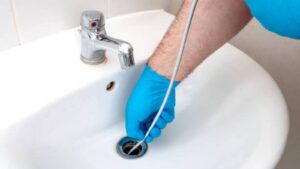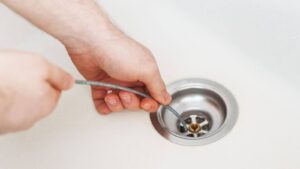How To Use a Drain Snake
When a plunger fails to clear a stubborn clog, you might be tempted to try various DIY methods like vinegar and baking soda or boiling water. However, these often fall short when it comes to tough blockages. The most effective solution? A drain snake. This ingenious tool breaks down or removes obstructions by navigating through the drain.
Unsure how to use a drain snake properly? Don’t worry, our blog has got you covered with dos and don’ts. Alternatively, you can always rely on professionals like Local Service Pro Plumbing to tackle your clogged drains efficiently.
What Is A Drain Snake?
A plumbing snake is a specialized tool designed to clear clogs from drains and pipes. Unlike a plunger, which works by pressure, a plumbing snake is a long, flexible metal cable with a coiled spring or auger at one end and a handle at the other. When you use a plumbing snake, it extends down the drain, reaching the blockage and breaking it apart or pulling it out.
These tools are especially useful for tackling stubborn clogs that a plunger can’t handle. While powerful, they require a bit more skill to use effectively. Plumbing snakes are suitable for clearing clogs in tub and shower drains, kitchen sinks, and bathroom sinks. However, it’s essential to use a specialized toilet snake for toilet clogs, as using a standard plumbing snake can cause damage.
How To Use a Drain Snake
If your sink, shower, or tub drain is draining slowly or not at all due to soft clogs within 15 to 25 feet down the line, a drain snake can come to the rescue. Unlike chemicals or plungers, which may not always be effective, a drain snake can pull the clog backward, solving drainage problems effectively.
- Prepare: Before starting, wear safety glasses and gloves. If the drain has been treated with liquid drain openers, flush it with water. Be cautious if water is not draining to avoid splashback. Avoid pouring caustic chemicals into the drain before snaking it.
- Remove Traps or Drains: Depending on the type of drain—sink, shower, or tub—remove the first section of drainage pipe to access the trap:
- For sinks, remove the P-trap located under the sink cabinet.
- For bathtubs, access the trap through the overflow portion of the drain.
- For showers, remove any screens or covers and then remove the drain by turning it counterclockwise.
- Extend Cable: Loosen the thumbscrew on the drum of the drain snake, extend the cable by hand, and push it into the drain pipe until you reach an obstruction.
- Snag Obstruction: Tighten the thumbscrew on the drum, and slowly rotate the drain snake handle two or three times to snag the obstruction.
- Retract Cable: Loosen the thumbscrew again, and slowly pull the cable back toward you in a straight motion to avoid turning it.
- Clear Drain Snake: Remove any debris from the end of the drain snake by twisting it counterclockwise and disposing of the clog properly.
- Continue Clearing Pipe: If needed, repeat the process to clear additional clogs until you’ve reached the end of the cable.
- Test Drain Flow: Reassemble the drainage pipe and run water to test for proper drainage.
- Clean Drain Snake: After use, wash off the drain snake to remove bacteria-laden debris and hair, and allow it to dry to prevent rusting.
Following these steps can help you effectively clear soft clogs from your drains using a drain snake. Feel like you still need a bit of help? Call Local Service Pro Plumbing today!




